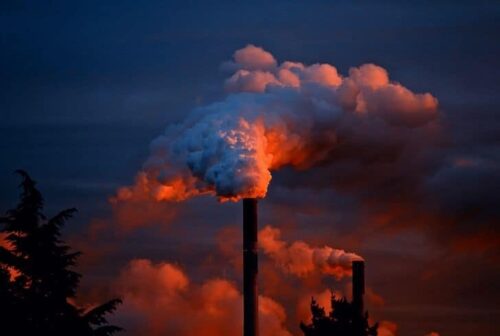It is the unthinkable huge magnitude of all the ill effects of pollution and its ever-increasing nature, which has forced the whole of humanity to do a great deal of serous thinking about its attitude towards the relationships with the natural environment.
Now, every individual needs to re-orient its life style, re-shape its earlier thinking and realize that the crisis emerged out of pollutions in different spheres of the natural environment may threaten the whole life on this planet.
With more and more people, there are – more and more sewage, more solid waste, more fuel being burnt, more use of fertilizers and pesticides to produce more food etc.
Currently, on an average, a city of one million people requires 1800 mt of food, 2700 mt of coal, 2500 mt of oil, 2400 mt of natural gas and 900 mt of motor fuel every day for its people. In turn, the inhabitants of the city produce 1800 mt of garbage, 4, 50,000 mt of sewage, 50 billion Litres of waste water, 400 mt of Carbon monoxide, 135 mt each of Sulphur dioxide and particulate matter and 90 mt each of Nitrogen dioxide and Hydrocarbons per day.
The number of cities with population of one million and above runs into thousands and thousands. Even in India, the number of such cities has gone above the number of 120.How much the pollution will all these cities be creating in near future and what may be the consequences of so much of pollution on local, regional, national and global levels?
Under the environmental conditions detailed above, the human society at present is being faced with two important challenges: one, Protection of the quality of the existing environment from further deterioration and two, Gradual restoration of the quality of its living resources. Both of these will involve managing situations causing undesirable risks, abatement of all the risks and improvements in the existing quality of environment by- characterising the risks scientifically, and implementing the appropriate options that are hopefully acceptable solutions to all the parties concerned.
Thus, formulation of sound strategies is needed for a sound management of the natural environment which incorporates the reduction of pollution and the improvement of the natural environment.
Prevention and Control: As Applied to Fossil Fuel Burning
Reducing the strength of pollutants so as to make them neutral or less harmful is called as control of pollution. Certain principles, guidelines and devices for controlling pollution are necessary to be followed and adopted now. These principles and guidelines together with control measures are being given below.
Practices for the Reduction of Pollution
The practices of reduction of different types of pollutions from atmosphere are briefly listed as below.
1. Large scale plantation in village commons, along rail tracks and along road-sides and compensatory forestation should be done so as to keep up the balance of oxygen and carbon dioxide gases in the atmosphere.
2. Burning of coal, petroleum and its products should be minimized to control emission of gases like CO2, SO2, H2S and NOx.
3. Application of aerosol and CFCs should be substituted by the application of safe alternative.
4. Automobiles should be fitted with pollution control devices. Vehicles should be checked periodically for the control of pollutants.
5. Pollution Control Plants should be installed compulsorily in all the industries. Some emission control devices popularly used in industries and elsewhere for the control of particulates are: Fabric Filters, Wet Scrubbers, Cyclone Collectors, and Electrostatic Precipitators.
Fabric Filters, Wet Scrubbers, Electrostatic Precipitators and Cyclone Collectors are gas cleaning devices that are fitted to the industrial plants for cleaning emissions before their direct entry into the atmosphere.
A unique mechanical device for filtering out particulate matter, in which fabric bags are used, is called as fabric filter. On the other hand, wet scrubber is a specific device meant for scrubbing out the particulate matter present in a gas by passing the gas through wet chambers. The Electrostatic Precipitator ionizes the particulates found in a gas and collects them at the oppositely charged end in it. The Cyclone Collector is the gas cleaning device that isolates dust particles by letting them pass in a cyclonic manner. The polluted gas is passed through the cyclone collector in a double vortex. The particles contained in the gas are separated. In fact, the spiral movement of the gas expels out the solid particles due to centrifugal force.
6. Periodic monitoring and testing of industrial pollution should be insured by concerned agencies.
7. People must be checked against burning of wastes including plastics and awareness should be generated in these regards.
8. A complete ban on shifting cultivation should be imposed in order to check air pollution.
9. Existing laws pertaining to pollution control should be enforced properly.
Feature Image : indiatoday




